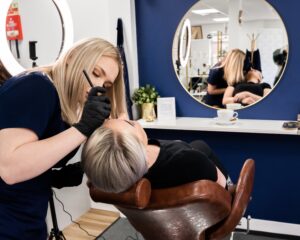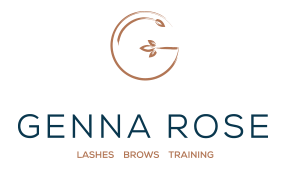Long, luscious lashes and perfectly groomed brows are coveted features in the world of beauty. As such, it’s no surprise that the quest for enhancing lash and brow growth has sparked a myriad of myths and misconceptions. From miracle ingredients to overnight transformations, separating fact from fiction is essential for understanding the science behind lash and brow growth. In this article, we’ll delve into the truths and myths surrounding the growth of lashes and brows, backed by scientific evidence.
Myth: Castor Oil is a Miracle Solution for Lash and Brow Growth.
Fact: While castor oil has gained popularity as a natural remedy for promoting lash and brow growth, scientific evidence supporting its effectiveness is limited. Castor oil contains ricinoleic acid, which is believed to stimulate hair follicles and encourage growth. However, there is insufficient research to conclusively prove its efficacy for lash and brow growth. Additionally, individual responses to castor oil may vary, and results may be influenced by factors such as genetics and overall health.
Myth: Trimming Lashes and Brows Promotes Faster Growth.
Fact: Contrary to popular belief, trimming lashes and brows does not stimulate faster growth. Lash and brow growth occur at the follicle level, and trimming the hair has no effect on the rate of growth. In fact, trimming may temporarily alter the appearance of lashes and brows by creating a more uniform length, but it does not influence the growth process itself.
Myth: Applying Vaseline or Petroleum Jelly Enhances Lash and Brow Growth.
Fact: While Vaseline or petroleum jelly may moisturize and condition lashes and brows, there is no scientific evidence to suggest that they promote growth. These products create a barrier that locks in moisture and prevents dehydration, which can help improve the appearance of lashes and brows. However, they do not contain ingredients that actively stimulate growth or lengthen the hair follicles.
Myth: Plucking or Threading Brows Causes Them to Grow Back Thicker.
Fact: The notion that plucking or threading brows causes them to grow back thicker is a common misconception. In reality, the appearance of thicker regrowth is due to the natural growth cycle of hair. When hairs are removed from the follicle, they may initially appear thicker and more noticeable as they grow back. However, the thickness of regrowth is determined by genetics and hormonal factors, not by the method of hair removal.
Myth: Lash and Brow Serums Can Instantly Transform Sparse Lashes and Brows.
Fact: While lash and brow serums can nourish and condition the hair follicles over time, they do not produce instant results. Most serums require consistent use over several weeks or months to achieve visible improvements in lash and brow density and length. Additionally, individual responses to serums may vary, and results may be influenced by factors such as genetics, age, and overall health.
Separating fact from fiction is essential when it comes to understanding the science behind lash and brow growth. While myths and misconceptions abound, scientific evidence provides valuable insights into the effectiveness of various methods and products. By relying on evidence-based information and understanding the natural growth cycle of lashes and brows, individuals can make informed decisions about their beauty regimen and achieve their desired lash and brow goals.




